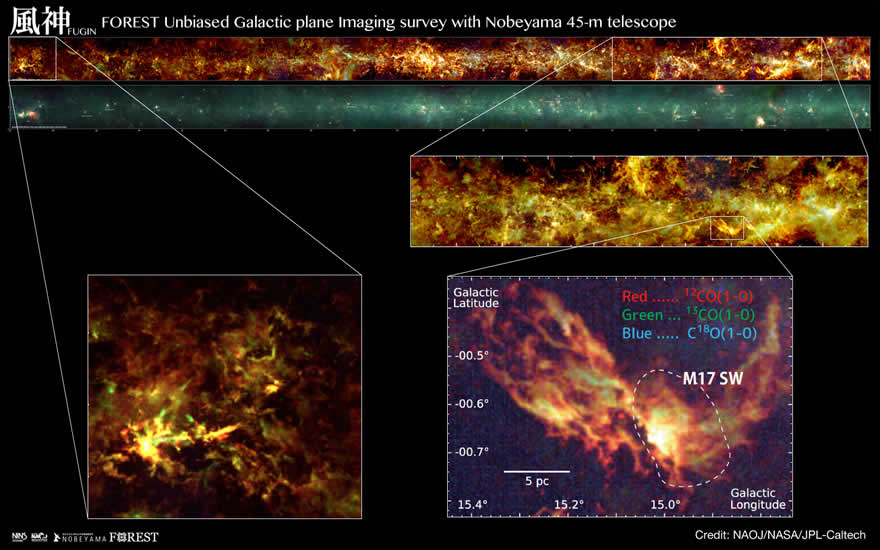FUGIN Project: Large-scale Exploration of the Invisible Milky Way - Making the Most Detailed Radio Map of the Milky Way
| Science

Astronomers have conducted a large-scale survey of the invisible Milky Way using the Nobeyama 45-m Radio Telescope.
When you look up on a clear dark night, you can see the Milky Way with the naked eye. If you shoot a photograph of the Milky Way, you will find some dark patches with fewer stars. In these areas, clouds of gas and dust in the Milky Way block the light from background stars. By observing the radio waves emitted by the gas in these clouds, astronomers can study the invisible portions of the Milky Way.
A research group led by Tomofumi Umemoto (Assistant Professor at Nobeyama Radio Observatory), including members from the University of Tsukuba, Nagoya University, Joetsu University of Education, Kagoshima University, and other universities, used the 45-m telescope from 2014 to 2017 to create the most extensive and detailed radio maps of the Milky Way in human history. The team has completed maps covering an area as wide as 520 full moons with about 3 times the spatial resolution of previous maps. This map will enable us to study the structure of the interstellar medium at various scales: from the large-scale structure of the entire Milky Way to the small-scale structure of individual molecular cloud cores which are directly related to star formation. Thanks to the good spatial resolution of the 45-m telescope, the team discovered many filamentary structures which were not seen clearly in previous maps. These structures are thought to hold important clues to understand how stars are formed.
This radio map will serve as a fundamental data set for future observational studies. We expect many discoveries by researchers around the world based on this map. This result appeared in the “Publications of the Astronomical Society of Japan” in October 2017. (Umemoto et al. “FOREST unbiased Galactic plane imaging survey with the Nobeyama 45 m telescope (FUGIN). I. Project overview and initial results”)